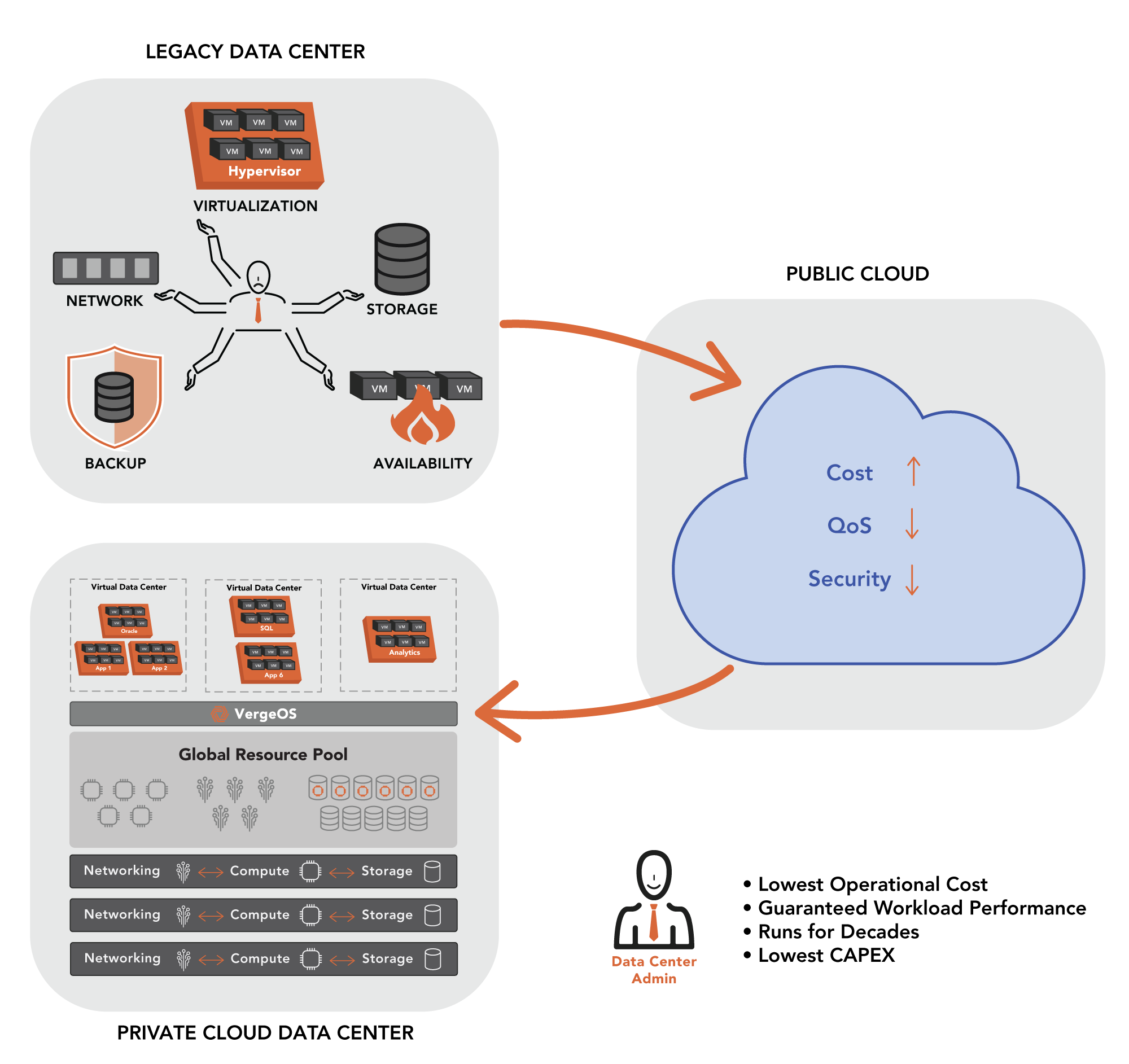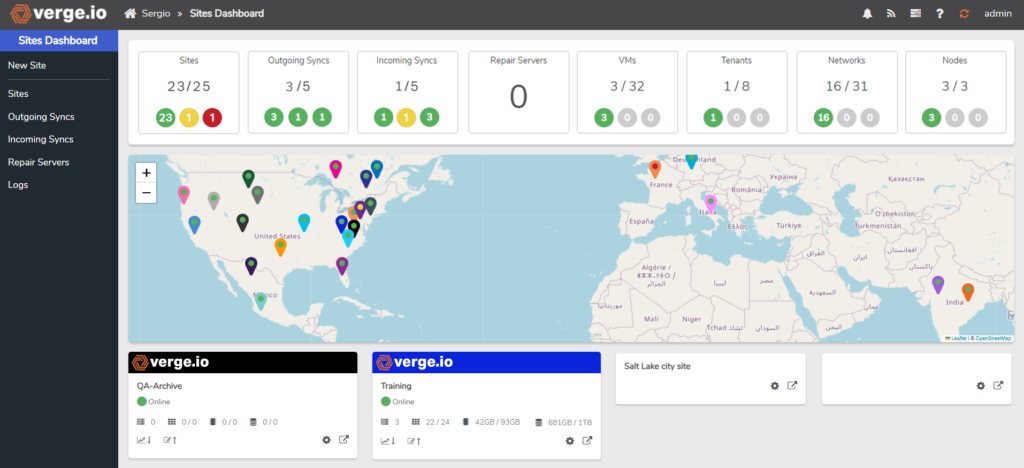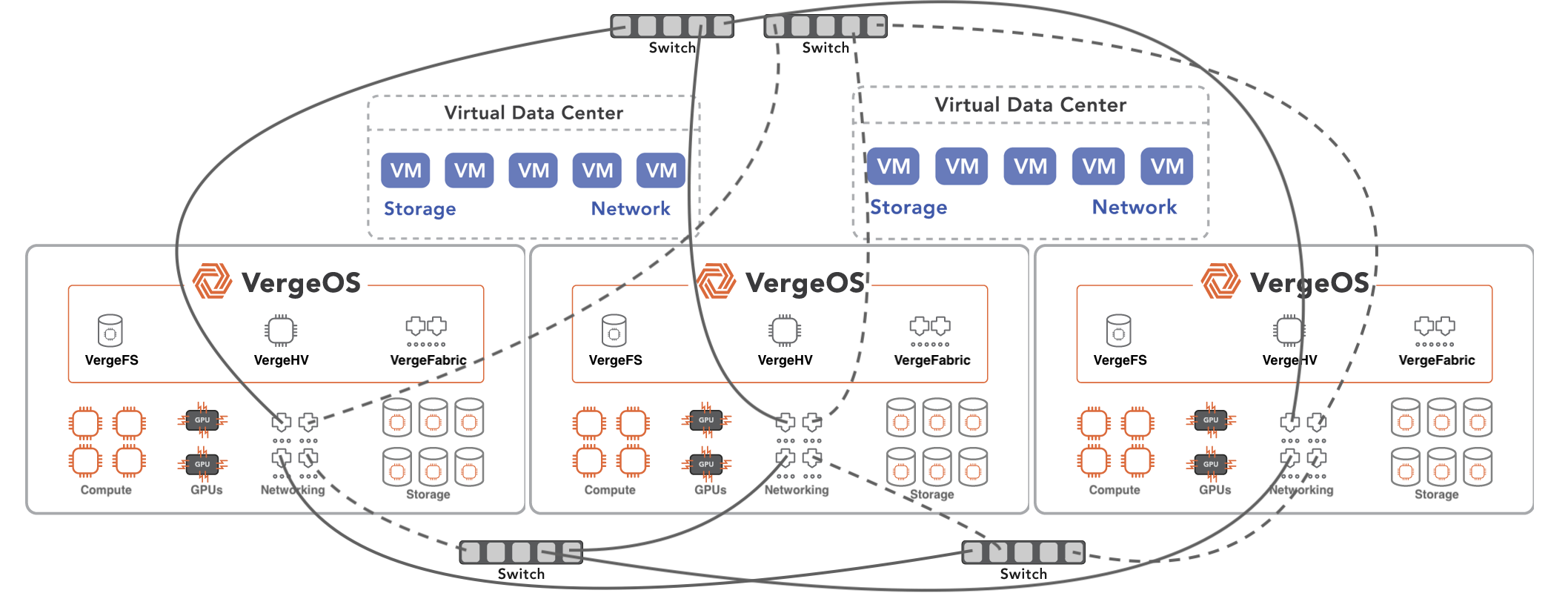The unpredictable cost of the Public Cloud and the difficulty in guaranteeing performance levels has many IT professionals trying to figure out how to repatriate cloud workloads or forcing them to re-examine their cloud migration strategies. There have been several high-profile examples of companies completely exiting public cloud services like Amazon AWS, Microsoft Azure, and Google Cloud. Maybe complete cloud repatriation isn’t required, but if you are to repatriate cloud workloads, we have a template you can use to help you make those decisions.
Why Repatriate Cloud Workloads?
The primary motivation for repatriating cloud workloads is to lower costs. Other concerns include guaranteeing performance and increasing security. Most organizations have not eliminated their data center, so they still have assets available to repatriate cloud workloads. From a hard cost perspective, on-premises infrastructure is far less expensive, especially if you can get five or more years of serviceability out of the investment. If you are going to use something for a long time, owning it is always better than renting it.
The public cloud model generally lures IT leaders with its promise of operational simplicity and eliminating hardware refreshes. Repatriating workloads means IT must learn to live with those two problems or look for a new operating environment.
Why Not Repatriate Cloud Workloads?
Moving a workload back on-premises isn’t the issue. There are plenty of methods to get your applications and data out of the cloud. The question is, what on-premises infrastructure will you use to host the repatriated applications?
The on-premises architectures are either the traditional three-tier architectures with a storage, virtualization, and networking infrastructure or a hyperconverged infrastructure (HCI) that claims to converge those three infrastructures. HCI, as we explain in our article “Move Beyond HCI to UCI” most HCI solutions don’t actually converge anything; virtualization, storage, and compute are three (or more) distinct code bases.
Both three-tier architectures and HCI suffer from inefficiency, complexity, and a lack of longevity. They don’t efficiently use the hardware resources that IT applies to them, which is a waste of IT budget dollars. Because of their multiple layers, these architectures are challenging to manage, patch, and upgrade. And their inability to integrate different hardware into the same operating environment requires IT to perform a storage or server replacement or refresh every four to five years.
Don’t repatriate your cloud workloads to the same environment that caused you to push those workloads to the public cloud in the first place. Use cloud repatriation as an opportunity to upgrade your data center to a private cloud.
Create a Private Cloud
To repatriate workloads, organizations need to take the best of the public cloud and combine it with the best of on-premises infrastructure. The goal should be to create a private cloud where the organization owns the infrastructure instead of renting it but has the serviceability and flexibility of the public cloud.
The problem is the term private cloud is a term that almost every infrastructure vendor, but their products don’t deliver the promise. A private cloud needs an infrastructure that can scale small enough to support Edge Computing use cases and large enough to support the most demanding enterprises. A private cloud is not a software-defined data center (SDDC). It is a software-defined organization where every data center and Edge location are part of the same operating environment. It should enable entire workloads, not just virtual machines, to move between IT locations at the click of a button and, when they arrive at the new location, be fully functional, including networking.
Delivering a private cloud that provides better-than-public-cloud operations requires a data center operating system that consolidates virtualization, storage, networking, and data protection into a single piece of software, creating an ultraconverged infrastructure (UCI). UCI simplifies operations at the primary data center location, remote data centers, and the Edge.
To learn more about making the private cloud a reality, register for our webinar “Infrastructures: Edge Computing and Private Cloud.”
VergeOS, The Way to Repatriate Cloud Workloads
VergeOS is the way to repatriate cloud workloads or keep workloads on-premises that you are considering moving to the public cloud. The ultraconverged solution includes virtualization, storage, networking, and data protection within a single piece of software. VergeOS enables you to create virtual data centers (VDC) and assign specific hardware resources to them so you can guarantee workload performance. It also, in most cases, leverages existing servers, even if they are a couple of years old. With VergeOS, you can also use VDCs as a method of IT delegation, creating secure, isolated environments and assigning them by a line of business, location, or function.

In the Atria release of VergeOS, we’ve delivered the Recipe Marketplace, a catalog of preconfigured virtual machines, and even complete workloads with all the associated virtual machines, networking, storage, and data protection settings. In the initial release, we include recipes to set up a Docker Container environment, LAMP stack, and an Object Store, with more on the way. You can also create your own recipes for workloads common to your organization and use the marketplace to present them to groups to which you delegate VDCs.
The Atria release also includes Site Manager, a global mesh-like management framework that enables IT to manage multiple data centers and edge locations from a single interface. Site Manager is built directly into the VergeOS code base. It is not a separate piece of software. As a result, each location knows about the other locations and can report telemetry information to multiple points, eliminating the single point of management failure concern common in add-on solutions. With Atria, VergeOS creates an organization-wide ultraconverged infrastructure that simplifies IT and dramatically reduces costs.

Conclusion
As Chris Evans at Architecting IT pointed out in his article “The Great Cloud Repatriation Debate – Compute,” it is not clear how many organizations are looking to repatriate cloud workloads. Still, there are plenty of organizations that slowed their cloud migration. There is also little doubt that there is concern over the public cloud model in terms of cost, guaranteeing performance, and security. The hesitation to move workloads back on-premises may be IT knowing that the environment they would repatriate those workloads is more complex and brittle than the public cloud because of legacy three-tier architectures and HCI. Armed with ultraconverged Infrastructure software like VergeOS, IT can provide a better-than-cloud experience for themselves and the organizations they serve.
Next Steps
Template: Get our free “Cloud Repatriation Template.”
Watch: Our in-depth LightBoard Video on Edge Computing and Private Cloud Data Centers.
Subscribe: To our Edge Computing Tutorial “Creating an Edge Computing Strategy.”
Watch: Our On-Demand webinar “Beyond HCI” for a comparison to HCI and a demonstration.



